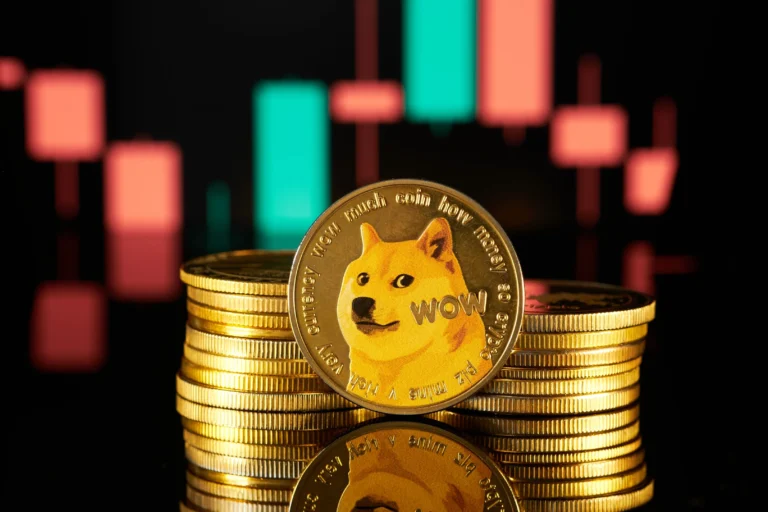Dogecoin (DOGE) with the image of a Shiba Inu dog called Kabosu as its logo, is one of the most popular and successful memecoins. It is considered an altcoin and was launched in December 2013.

Bitcoin’s Historic High: Trump’s Victory and the Future of the Crypto Industry
Donald Trump’s victory in the U.S. presidential election has become a powerful catalyst for the cryptocurrency market. Since the election results were announced, Bitcoin, the first cryptocurrency, has begun to surge rapidly, reaching new all-time highs almost daily. On November 10, 2024, Bitcoin’s rate exceeded $80,000, setting a new record and surpassing the capitalization of Meta Corporation.
One of the primary reasons for this growth is Trump’s promise to support and legalize the cryptocurrency market. His election campaign repeatedly emphasized the importance of cryptocurrencies and digital assets as tools for economic growth, creating a positive sentiment among investors. Analysts note that these changes could lead to new regulatory measures that would promote the industry and facilitate the process of exchanging BTC for fiat currencies.
In the past week, Bitcoin’s price has increased by 14%, and the monthly growth has exceeded 31%. At the time of writing the article, its value stands at $84,000, with a total capitalization reaching $1.5 trillion. Additionally, in November, the cryptocurrency market liquidation volume totaled $383.9 million, reflecting active trading and significant investor interest. Short positions liquidation reached $278.4 million, while long positions lost $105.6 million, underscoring the high volatility of the crypto market, especially during major political events. Investors show interest in Bitcoin trading on various exchanges.
Ethereum, the second-largest cryptocurrency by market cap, also shows significant growth. On November 10, it reached $3,216, marking its highest point since August 2024. In the past week, Ethereum’s price increased by 28%, and the monthly gain reached 33.5%, bringing its market cap to about $382.9 billion. Interest in buying Bitcoin and Ethereum continues to grow as investors seek to benefit from the crypto market’s positive dynamics.
Future Predictions and Investor Prospects
Experts suggest that Bitcoin’s price could reach 90-100 thousand dollars by the end of the year, especially if the new U.S. administration’s cryptocurrency policy is favorable. In the long term, Pantera Capital analysts predict that Bitcoin could increase significantly in value by 2028 if interest in digital assets remains high. While the cryptocurrency market remains highly volatile, this rapid growth of both Bitcoin and Ethereum demonstrates increased trust in digital assets by large institutional investors. Many investors are considering how to buy Bitcoin, exchange Bitcoin for other currencies, and optimize their investments.
New Technologies and Impact on the Crypto Industry
Aside from market fluctuations, technological changes also impact the market. Specifically, the increased use of blockchain outside the financial sector (in healthcare, logistics, education) adds value to cryptocurrencies as a reliable technological asset. The popularity of DeFi (decentralized finance) and NFT (non-fungible tokens) has significantly increased the use of digital assets, which may support demand in the future. In this context, interest in operations such as BTC and other crypto asset exchanges has risen significantly.
Important Considerations for Investors
It is important for investors to understand that high volatility persists amid significant growth. Rapid price changes in the crypto market can lead to substantial losses for those unprepared for such fluctuations. Experts advise investors to use more balanced strategies, consider long-term prospects, and avoid impulsive decisions. Even with government and celebrity support, cryptocurrencies remain a risky asset. Nevertheless, for many, questions like how to buy Bitcoin or exchange Bitcoin profitably remain relevant.
Cryptocurrency as Part of the Global Economy
Overall, Donald Trump’s victory and his intentions to create a favorable environment for cryptocurrency development in the U.S. have opened a new chapter in the history of Bitcoin and other digital assets. By maintaining steady growth and attracting new investors, the crypto market is gradually becoming a key component of the global economy, paving the way for a new digital era where such transactions become a regular part of the financial world.
Start your crypto exchange with Coin24

Exchange BTC, ETH, USDT and more — cash or card

Secure and fast crypto exchange since 2018



